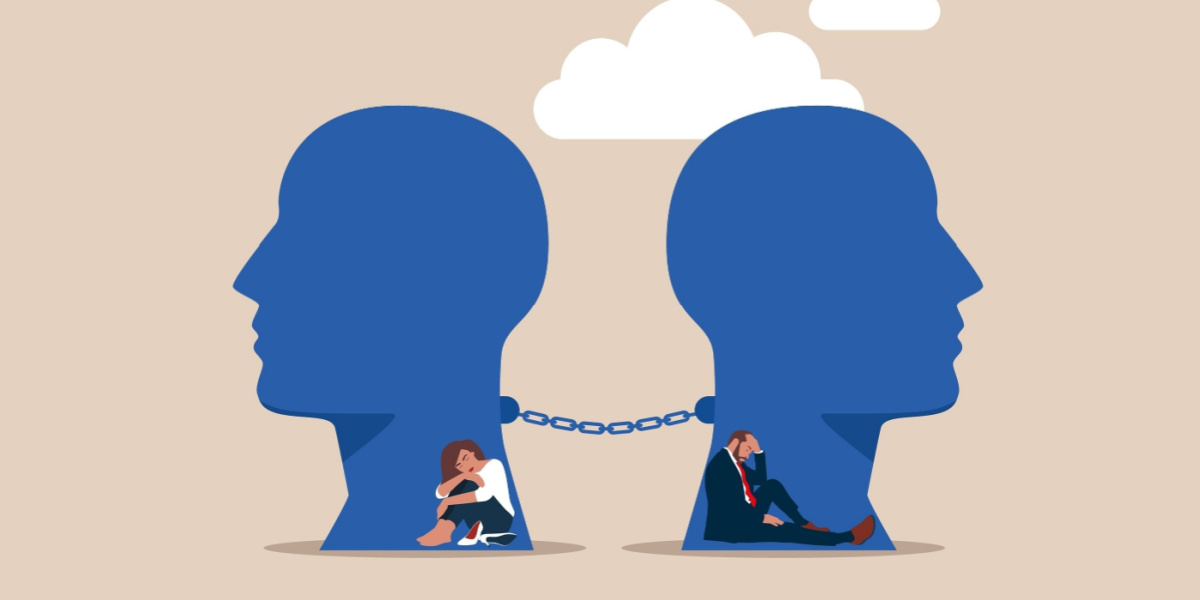Love is supposed to heal, nurture, and support — but when addiction enters the equation, love can sometimes take on a dangerous twist. Many families and partners of those struggling with addiction find themselves caught in a confusing and painful cycle of codependency, where love begins to look more like control, enabling, or self-sacrifice at the expense of one’s own well-being.
Understanding codependency is crucial not only for the recovery of your loved one but for your own emotional health and growth. Let’s break down what codependency is, why it’s so common in the world of addiction recovery, and how both the addicted person and their loved ones can break free from this unhealthy bond.
What is Codependency?
Codependency is a behavioral condition in relationships where one person enables another’s addiction, poor mental health, immaturity, irresponsibility, or under-achievement. Often, the codependent person’s identity and self-worth become entirely tied to helping, saving, or “fixing” someone else — usually at the cost of their own needs.
In the context of addiction, this often means that family members or partners overextend themselves emotionally, financially, or physically, trying to prevent the addicted person from facing the consequences of their actions.
The Vicious Cycle of Codependency and Addiction
The roots of codependency are often tangled in good intentions. You want to help your loved one, keep them safe, and shield them from harm. But addiction is a disease that thrives on denial, secrecy, and escape. The more you shield someone from the fallout of their addiction, the less incentive they have to seek genuine help.
This cycle looks like:
- The addicted person makes harmful choices.
- The codependent partner or family member rushes to “rescue” or cover up the damage.
- The addicted person avoids consequences and the behavior continues.
- The codependent person feels increasingly resentful, exhausted, and unappreciated — but also trapped.
- Both individuals remain locked in an unhealthy dynamic that makes recovery harder for both.
Common Signs of Codependency
Recognizing codependency isn’t always easy, especially when your actions feel like love or protection. Here are common red flags:
- You feel responsible for the addicted person’s emotions, actions, or sobriety.
- You put their needs ahead of your own — even when it harms you.
- You cover up for them, make excuses, or lie to others to protect them.
- You struggle to say “no” even when you know you should.
- Your self-worth depends on being needed or appreciated.
- You experience anxiety, guilt, or fear when setting boundaries.
Why Codependency is Dangerous in Recovery
Addiction recovery is built on personal accountability, self-awareness, and change. Codependency blocks that growth by allowing the addicted person to avoid the discomfort that motivates change. Instead of learning how to handle emotions, relationships, and responsibilities, the addicted person often continues to rely on the codependent loved one as a safety net.
And for the codependent person, the emotional exhaustion, resentment, and lack of boundaries can lead to burnout, anxiety, depression, and even physical illness.
Breaking the Codependency Cycle: Steps for Families and Loved Ones
1. Acknowledge the Pattern
The first step in breaking free from codependency is recognizing that it’s happening. It’s not about blame — it’s about understanding the dynamics at play.
2. Separate Love from Responsibility
You can love someone deeply and still acknowledge that their recovery is not your job. Offering emotional support is important — but shielding them from reality robs them of the chance to grow.
3. Establish Healthy Boundaries
Boundaries are the foundation of healthy relationships. Clearly communicate what you can and cannot accept, and stay consistent. This might include refusing to offer financial help, only interacting when the person is sober, or requiring participation in recovery programs for continued support.
4. Seek Support for Yourself
Family members often overlook their own needs when caring for someone in recovery. Attending support groups like Al-Anon or seeking individual therapy can help you regain your sense of self and build resilience.
5. Focus on Self-Care and Personal Growth
Healing from codependency requires nurturing your own emotional, physical, and spiritual health. When you reclaim your identity and well-being, you model strength and stability for your loved one.
6. Let Go of the Illusion of Control
Perhaps the hardest truth for those trapped in codependency is this: you cannot control someone else’s recovery. Letting go of this illusion frees you from toxic guilt and allows you to focus on what you can control — your own actions and choices.
The Importance of Dual Recovery
Often, addiction and codependency create parallel wounds. While the addicted person works on rebuilding their life in recovery, the codependent partner or family member must do the same. Healing is healthiest and most sustainable when everyone involved commits to their own emotional growth, rather than trying to “fix” each other.
Final Thoughts
Love is powerful — but in addiction recovery, it must be healthy, boundaried, and balanced. Understanding codependency helps families avoid the trap of enabling and, instead, offer the kind of support that encourages growth, self-reliance, and true healing.
When love stops hurting and starts helping, recovery becomes a path you can both walk — side by side, but as two whole people.


Leave a Reply